The First Quaker Communities
The roots of Quaker utopian communities can be traced back to the very beginning of the movement. When, during the English Commonwealth in the mid-1600s, the first Quakers unleashed their impassioned preaching campaign, accompanied by charismatic signs and wonders, they addressed a people already traumatized by civil war, regicide, and famine. It is not surprising, therefore, that this preaching exacerbated an existing sense of upheaval and anguish within the country. However, these Friends felt that they had been given a glimpse of heaven on earth, and were determined to share it with the rest of the world. A Pentecostal outpouring of the Holy Spirit (Joel 2:28–29/Acts 2:17–18) seems to have acted as the catalyst and enabler of this radically new vision and life, experienced as an empowering and sanctifying presence, in which people became temples of the living God (1 Cor. 6:19). This reality convinced them that they had entered the new covenant of divine intimacy promised through the prophet Jeremiah (Jer. 31:33–34) and fulfilled by Christ (Heb. 8:10–12). They no longer needed to be constrained by earthly laws or government because they were ruled inwardly by Christ. They no longer needed to learn from human teachers because Christ had come to teach his people himself. By the work of the Holy Spirit, they were participating in a new way of being human.
In this new humanity, it was no longer they who lived but Christ who lived in them (Gal. 2:20). This was a prophetic understanding of human existence, in which Christ lives, acts, and speaks in and through his people. In this way, they were also given an entirely new vision and perception. The veil that prevented them from seeing the truth was removed, and everything could be perceived as it really was, at a deeper level. This was an apocalyptic experience that made it possible for people to see the whole creation through divine eyes, rather than through a limited human vision. All this produced a powerfully embodied spirituality and a lived witness that turned the world upside down. The first Friends were convinced that the kingdom of God was being established in their time. Dorothy White wrote many pamphlets at the time, including 1660’s A Visitation of Heavenly Love, in which she wrote:
Thus is the living God purifying his Temples, and he is making a Glorious situation, a Heavenly Habitation, and an Everlasting dwelling place in the sons and daughters of men; for God is now come to dwell in his people.
We have seen that, in its early years, the Quaker movement was a utopian community that vigorously challenged the dominant norms and values of English society. A glimpse of heaven transformed their lives, and brought them into the vanguard of the Lamb’s War. They found themselves caught up in a spiritual struggle to establish heaven on earth.
This was a universalist Christian vision that was not constrained by human structures or traditions. Everyone possessed the Holy Spirit, so all people could enter the new covenant relationship and live in the new humanity in Christ, regardless of nation, culture, class, gender, age, or education. To be a true Christian, therefore, was not first and foremost about being in the right institution or professing the right beliefs but rather about surrendering oneself to a hearing and obeying relationship with God in Spirit. The first Friends saw an essential choice for humanity: people could focus their lives on the Creator or on the created. If they chose the former, they would abide in that which is uncreated and eternal. If they chose the latter, they would know only what is temporary and corruptible. One way leads to the divine nature and eternal life, the other to sin and death. Hence, these Friends concluded that heaven was not primarily a future event or a post-mortem destination but rather the ever-present possibility of communion with God. In Christ, temporal human creatures could be reunited with the eternal Creator. For he is the one in whom God and humanity, Creator and created, and heaven and earth meet. That which, in the Fall, had been scattered and divided was now being gathered into unity.
The radical nature of this early Quaker experience, and the visible way in which it was enacted by Friends during the 1650s, represented a decidedly utopian vision, one that seemed to fundamentally threaten accepted norms and the very basis of social order. Their witness disturbed established social hierarchies, gender divisions, and attitudes toward other cultures, races, and religions; and it challenged dominant understandings of the creation and the status of earthly government. In a culture that still assumed rigid social hierarchies were ordained by God, Friends proclaimed that God is no respecter of persons (Acts 10:34), meaning that God does not recognize the validity of outward human divisions. Rather than being God’s intention, social inequality was a result of human sin in a fallen world. Those who demanded deference from others were guilty of idolatry, because only God is worthy of worship. In prophetic style, James Nayler raged against economic and social injustice:
God is against you, you covetous cruel oppressors who grind the faces of the poor and needy. . . and hereby getting great estates in the world, laying house to house and land to land till there be no place for the poor; and when they are become poor through your deceits then you despise them and exalt yourselves above them. —James Nayler, A Discovery of the First Wisdom (1653)
In a deeply patriarchal society, where men sought to confine women to the private sphere as their personal possessions, Friends affirmed the spiritual equality of all women living in the new birth. In these circumstances, there is no longer male or female, for all are one in Christ Jesus (Gal. 3:28). In her tract The Just and Equal Balance Discovered (1660), Sarah Blackborow argued that “Christ was one in the male and in the female; and as he arises in both.” How dare men stop a woman from speaking, when it is Christ speaking through her? The women who should remain silent in the church and learn from their husbands (1 Cor. 14:34-35) were the whole body of Christ, including both men and women. Christ was the bridegroom, and the church was his bride (Rev. 19:7). This experience of Christ living and speaking through them was powerfully liberating for early Quaker women, who publicly exercised an assertive prophetic ministry that outraged the wider society:
Thou tellest the people, Women must not speak in Church, whereas it is spoke only of a Female, for we are all both male and female in Christ Jesus. —Priscilla Cotton and Mary Cole (To the Priests and People of England [1655])
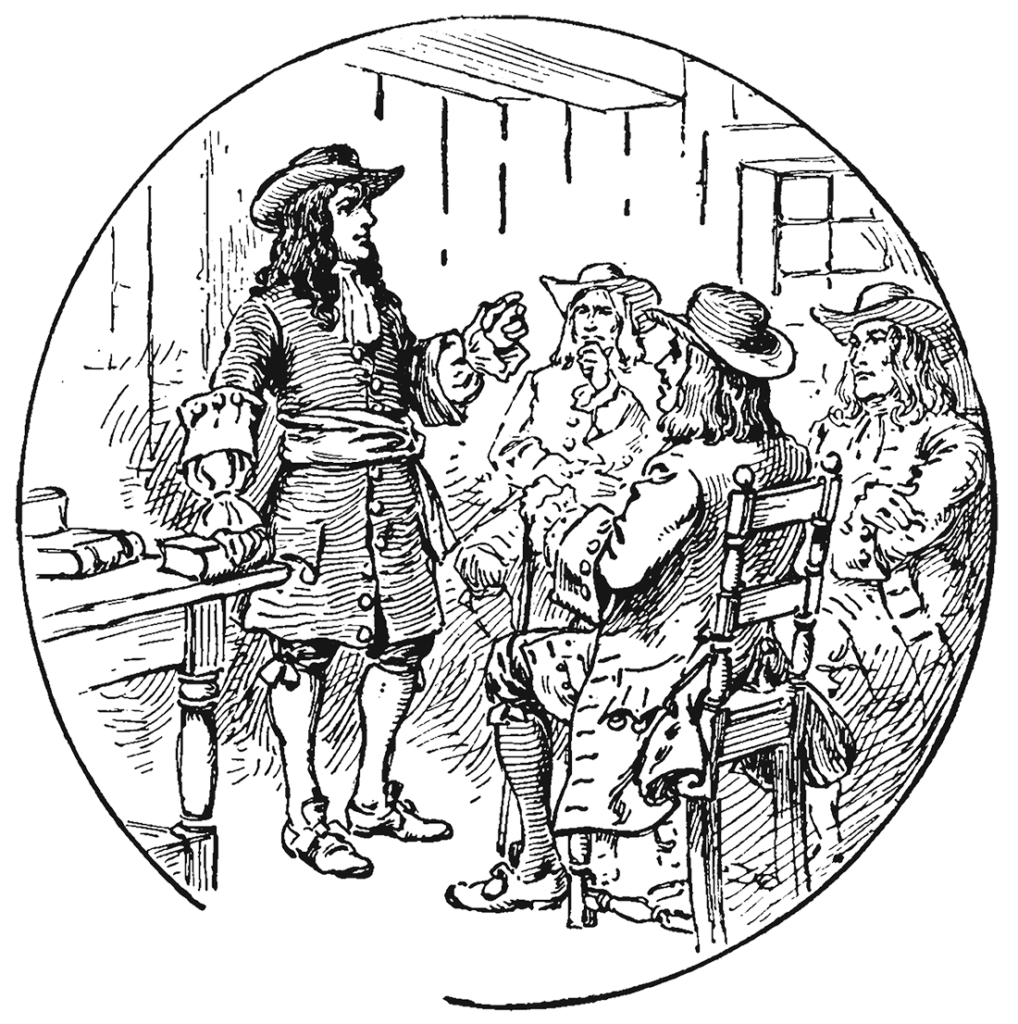
Quakers. Vintage illustration. Morphart.
Deeply antagonistic attitudes toward other cultures, races, and religions were common at this time. However, early Quakers felt that these outward distinctions were merely temporary features of a fallen world. Such scattering was being reversed by the gathering work of the Holy Spirit. This insight seems to have enabled Friends to adopt a relatively enlightened attitude, leading to a number of fascinating encounters with Jews, Muslims, and “heathens.” For example, Mary Fisher, writing in 1657 about her meeting with Muslims in the Ottoman Empire, expressed her view that “there is a royal seed amongst them which in time God will raise. They are more near Truth than many nations.”
An interesting dimension of their new vision in the Spirit was that Friends felt it enabled them to see the creation through divine eyes, rather than in their limited earthly perception. In the first birth, people are in a destructive relationship with the rest of creation. In the new birth, however, right relationship is restored. People can understand the creation as it really is, and again become vessels through which God’s upholding love flows. George Fox vividly describes this creation as apocalyptic in his Journal:
All things were new; and all the creation gave another smell unto me than before, beyond what words can utter. . . . The creation was opened to me; and it was showed me how all things had their names given them according to their nature and virtue.
Finally, their experience of participating in a new humanity influenced their attitude toward government and the rule of law. In the new covenant, Christ is the eternal king and ruler. So the authority of earthly government is temporary and limited. When people are ruled inwardly by Christ, God’s law is written on their hearts. In such circumstances there is no need for earthly government to constrain them. Their lives will inevitably reveal divine righteousness and justice. In the 1659 An Account from the Children of Light, James Nayler described this understanding as follows:
There is no kingdom nor people [that] can truly be said to be the Lord’s and his Christ’s, but as they come to be guided and governed by the law of his Spirit in their consciences.
We have seen that, in its early years, the Quaker movement was a utopian community that vigorously challenged the dominant norms and values of English society. A glimpse of heaven transformed their lives, and brought them into the vanguard of the Lamb’s War. They found themselves caught up in a spiritual struggle to establish heaven on earth. In their experience, the Holy Spirit leveled social hierarchies, healed gender divisions, gathered scattered peoples, restored the creation, and replaced earthly rule with the rule of Christ. For a short while, Friends were on the offensive, pulling down the pillars of the world. However, the world soon fought back. God’s kingdom did not come; the Commonwealth collapsed; the monarchy was restored; and persecution intensified. Friends found themselves in a desperate struggle for survival. In the context of a campaign for religious toleration, their focus turned to reassuring those in power about their harmless intentions. Although the utopian vision lived on, it was significantly toned down. Rather than condemning economic injustice, some Friends, like Robert Barclay, began to argue that God had ordained social inequalities:
[W]e say not hereby that no man may use the creation more or less than another. For we know that, as it hath pleased God to dispense it diversely, giving to some more, and some less, so they may use it accordingly.
Within a relatively short period of time, Quakers transformed themselves from a movement of spiritual revolution to a peculiar but respectable religious society.
The sight of assertive women ministers preaching in public was scandalous in such a patriarchal society. While Quakers maintained their commitment to women’s spiritual equality, in practice, their freedom was curtailed. Threatening public messages and writings were discouraged. Quaker women came increasingly under the oversight of male elders, and their efforts were directed toward separate women’s business meetings, focusing on acceptably “feminine” concerns. Enlightened attitudes toward people of other cultures, races, and religions were also weakened, as some Friends became involved in the slave trade. George Fox advocated a “Covenant Slavery,” which justified the practice and sought to soften its harsher aspects. Inward spiritual liberation became increasingly disconnected from outward social justice.
The earlier apocalyptic understanding of the creation was increasingly abandoned, as many associated it with improper religious enthusiasm. As Friends became successful in business, a more utilitarian attitude tended to replace the apocalyptic view. As time went on, Friends struggled less against the social order and worked instead to open up spaces within which their peculiar religious practices could be tolerated. As a result, their appeals to the English government focused more narrowly on freedom of conscience. Within a relatively short period of time, Quakers transformed themselves from a movement of spiritual revolution to a peculiar but respectable religious society.
The first Friends were just one of a number of utopian movements of the Spirit that have bubbled up across history (e.g., early Franciscan, Anabaptist, Methodist, and Pentecostal movements). They have either been resisted and destroyed, or forced to adapt themselves to the wider society in order to survive. The early Quaker story shares remarkable similarities with that of the Azusa Street Revival. This event took place in Los Angeles, California, between around 1906 and 1915. It is regarded as the primary catalyst for the spread of Pentecostalism in the twentieth century. The revival was characterized by ecstatic spiritual experiences accompanied by miracles and speaking in tongues. Within a society that was rigidly patriarchal and racially segregated, women preached and prophesied, and Black and White folks worshiped together. In addition, like Quakerism, early Pentecostalism was a peace church. Those involved were strongly criticized for their outrageous behavior, and over time, the more radical aspects of their early witness were weakened, suppressed, and revised. The movement was forced to accommodate itself to the dominant culture.
When modern Friends reflect on the ecstatic and socially disruptive nature of the earliest Quaker movement, there are two common responses. Some Friends are inspired by their uncompromising radicalism and disappointed by the apparent capitulation to the demands of respectable society. Others feel slightly embarrassed and are relieved that Quakers settled down, became more sensible, and made a positive contribution to society. Both views have validity. The first reflects the upside-down nature of God’s kingdom and the subversive character of the Holy Spirit, while the second recognizes the unavoidable need to function within the world as it is, rather than as we would like it to be. Perhaps these utopian movements are best understood as the Braxton Hicks of the kingdom of God. In pregnancy, Braxton Hicks are the initial testing contractions that help prepare the body for full labor and birth. Movements of the Spirit, such as early Friends and the Azusa Street Revival, did not give birth to heaven on earth. However, they anticipated the coming of the kingdom and prepared the world for the birth of the new creation.
We know that the whole creation has been groaning in labor pains until now; and not only the creation, but we ourselves, who have the first fruits of the Spirit, groan inwardly while we wait for adoption, the redemption of our bodies. Romans 8:22–23 (NRSV)


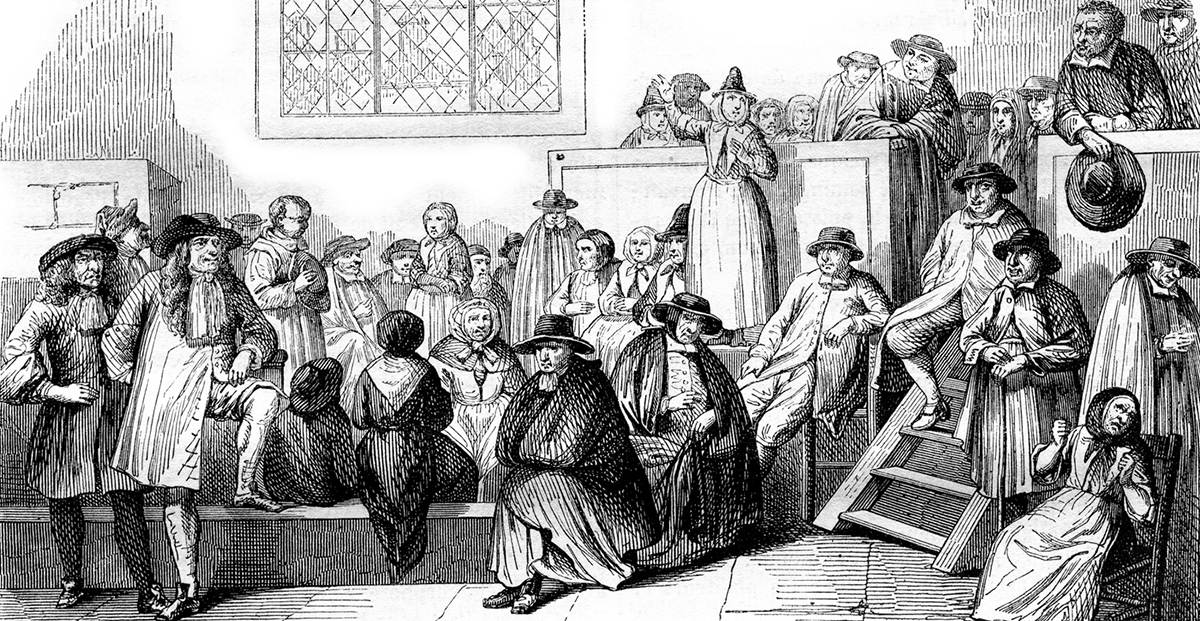
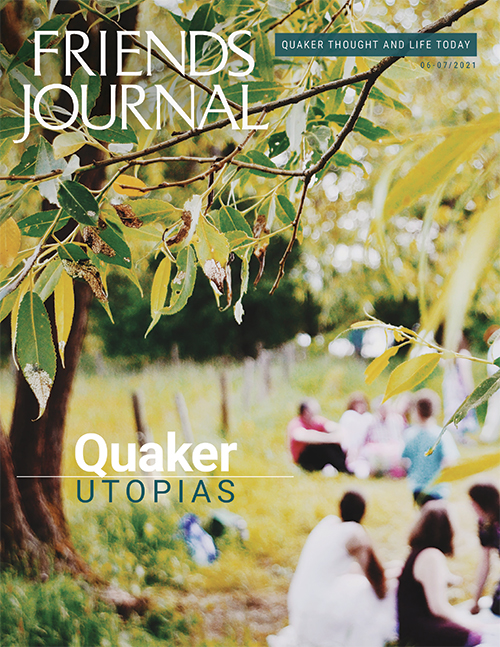
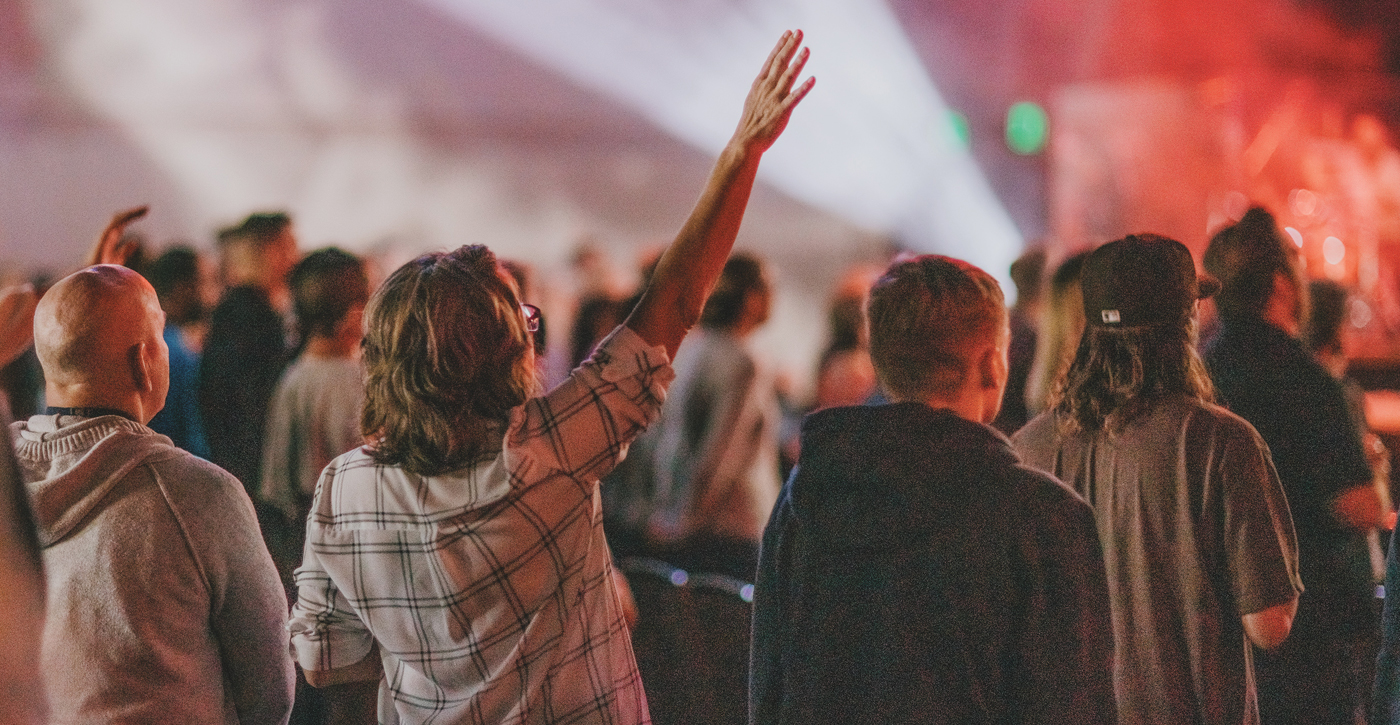
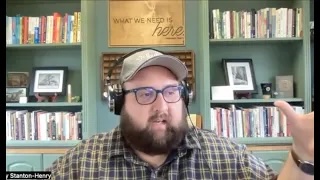
The early Quakers had as their central focus the Kingdom of God whose outward manifestation was the Lamb’s War. It was their central focus as it was for their mentor, Jesus of Nazareth. This Kingdom was within (they quoted Lk. 17:20-21 KJV). It was the Inward Light and there was no need to ‘gad abroad’ (Howgill) for it was within them, as it was within ‘all People on the Earth’ (Fox). Thus they were founders, not seekers. The Lamb’s War was their peace testimony, not the document sent to King Charles II. That view is a 20th-century Quaker error. The document only re-iterates their stance vis-a-vis the Lamb’s War based as it was on peace and justice, a War with no ‘carnal weaponry’ (their words). They carried the idea of the Kingdom throughout the 17th-century as their voluminous writings make abundantly clear.
We need as modern Friends to rid ourselves from the tired Marxist-inspired commentaries on the first Friends by such people as Christopher Hill and Barry Reay, and others. Their view is untenable as more research has thrown more light on this fascinating period of early Quakerism.
Thanks Gerard, I have sympathy with what you say. I think a key limitation in the analysis of Hill, Reay et al is that they are not prepared to accept that early Quaker faith and practice was genuinely founded on spiritual experience and a religious interpretation. They feel the need to view these foundations as a kind of deluded false consciousness.
Agreed, Stuart. And thanks for the article. I enjoyed it very much.
Thankyou for this historical perspective. I am new to the Quakers and l appreciated your article very much.
Thank you so much Kerry, that’s good to hear.
This is very interesting. My ancestors (Peter and Judith Trego, Jacob Trego, etc.) were early settlers in Delaware and Buck’s County. I have the family history book but I am especially interested in what life was like for them, so these articles help me understand, to put myself in their place, in their time.
Thank you,
Hazel Trego
Thanks so much Hazel, that is good to hear. Apologies, I have only just seen your comment.B